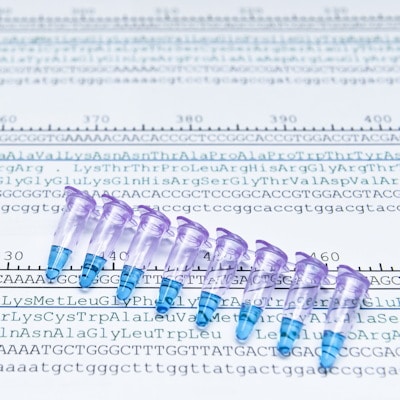What’s Trending in Library Preparation and Target Enrichment for Next-Generation Sequencing (NGS)

Kalorama Information forecasts the library preparation and target enrichment for next-generation sequencing (NGS) market will have a 19.9% CAGR from 2021-2026.
The next-generation sequencing (NGS) library preparation and target enrichment market is estimated to have global sales of $1.2 billion in 2021, and is forecast to surpass $3.0 billion in 2026. This amounts to a compound annual growth rate (CAGR) of 19.9%, according to leading medical market research publisher Kalorama Information in the recent report The Market for Library Preparation and Target Enrichment for Next-Generation Sequencing 2021.
Spending slowed significantly in parts of 2020 due to COVID-19, primarily in Q2 2020. But spending began to approach typical levels in Q3 2020 and Q4 2020. Ultimately, sales volume reached its former trajectory in Q1 2021, based on sequencing consumables sales from Illumina, the dominant supplier of sequencers and sequencing consumables.
Illumina has experienced extremely rapid growth in the last few years. The consistent rate of adoption of Illumina’s systems has generated steadily high growth in consumables revenues. As a result, the share of revenues coming from Illumina’s sequencing consumables continues to rise. It went from 53% of the company’s revenues in 2016 to 62% of total revenues in 2020.
Overall, the market has maintained its roughly 20%-25% growth rate over several years, and the technologies continue to be improved and become more user-friendly. Automation, streamlining of workflows, and other innovations have gradually made the library preparation process easier and less time-consuming. The usage of sequencing spans an ever broader range of applications, industries, and specializations, but the focus has mostly been life science research-related. As the science becomes more established, various clinical applications are becoming more proven, and there are certain areas such as cancer where there are expected to be rapidly growing benefits in the near future.
In addition, NGS library preparation methods continue to evolve and the overall sequencer market is in an ongoing state of flux as more labs gain access to these resources. New products are allowing NGS to be used for a wider range of applications, with a wider range of sample types, with decreasing volumes of sample, and many without the requirement for PCR amplification. Innovative methods are enabling long read and long-range data to be obtained using short-read sequencers.
“With a huge number of product introductions, the competition in library preparation and target enrichment products has increased greatly in recent years,” reports Kalorama Information. “Further, the market has benefited as the installed base of sequencers has grown consistently, the workflows are gradually being improved, and new applications and new regions are seeing adoption.”
Conversely, growth will likely be offset by decreasing prices as the competition increases and end-users increasingly cut costs. Smaller systems are being introduced with reduced cost per run, albeit with lower output. The price of sequencing has been falling constantly, akin to Moore’s Law with chips and transistors, but this has been slowing to some extent. As prices drop, end-users find more ways to use the sequencers. Longer-term, as prices continue to drop, diagnostic labs, the healthcare industry and other applications seem to have constant uses for sequencers.

